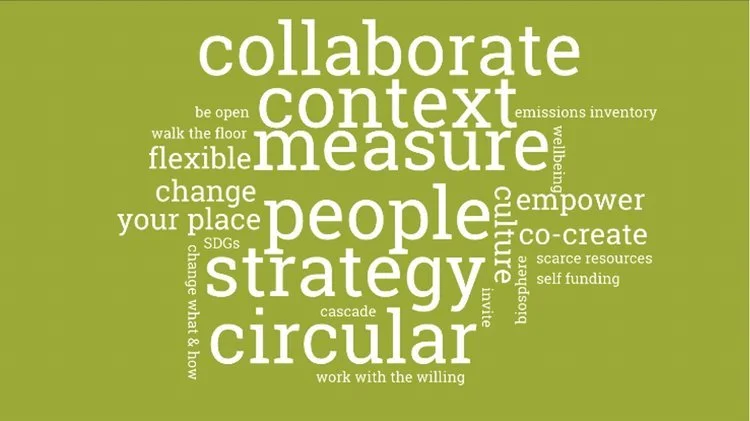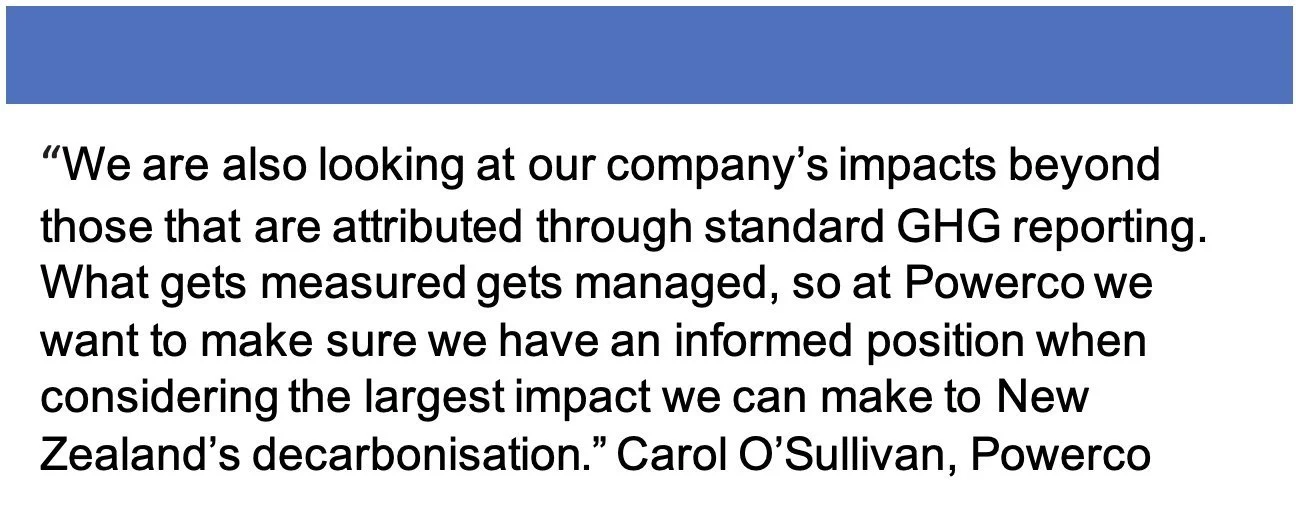Accelerating Your Business’ Sustainable, Low Carbon Journey – Top Tips from Those in the Hot Seat
Accelerate your sustainable, low carbon journey, and amplify your impact, with these hard-earned insights from Taranaki businesses and organisations treading this tough and complex path.
We urgently need to deliver sustainable, low carbon outcomes for our products/ services to resonate with customers, to attract talent and to drive results. It’s tough and complex with our colleagues focused on traditional measures of success, busy with their “day” jobs and uncertain on where to make the most impact. With ambitious science based targets (50% cut over the next decade) in carbon and challenging broader sustainable business goals, where do you learn the shortcuts to driving change?
A panel of Taranaki sustainability, low carbon and innovative product managers – delivering on this everyday –shared their experiences on how they are driving success. We took away three top themes to focus on when 1. planning and 2. action.
Planning – think context, measure and strategy
Acting – think people, collaborate and circular
Structuring Your Plan
Carbon reductions, sustainable use of resources and protection of bio-diversity are impacted by decisions, actions and inactions across our businesses, our supply chains and the actions we enable our customers or other stakeholders to take. It’s a complex web, hard to navigate and sometimes daunting to start or prioritise what to do. So as you pause to plan, reflect on context, measure and strategy.
“Context is everything” and thinking context reminds us of how everything is connected. If our actions are to have the truly, long term sustainable impacts we aspire to, then we need to frame our planning in the context of:
Our place (where we, our people, our customers and suppliers are); our respective and shared heritage and cultures (something that is especially relevant and offers particular insights in Aotearoa/NZ).
Your business’ mission, method and ambition.
Context may help us identify where the obvious and easy low carbon decisions are not the best when you consider their wider impact on the environment, embodied emissions (measured elsewhere), other sectors or wellbeing.
“Measure is the place to start”. Measuring your emissions exposes the biggest prizes, the quick wins that get momentum and the early savings that fund the next steps. It sets a baseline so we can understand impact and change.
This typically starts with emissions directly attributed to your business activities (e.g. from energy used, travel and product shipping/ logistics, emissions in operations).
As capacity builds it extends to the carbon embodied in the manufacture and shipping of the goods or services you buy (upstream) and how what you do impacts your customers and stakeholders carbon footprint (downstream).
These upstream and downstream emissions can outweigh your direct emissions which can change what you do and how you do it to realise these bigger benefits.
“Strategy needs to be clearly stated” as the changes spread across the organisation and need to be embedded in every future decision. Sustained, broad and deep emissions reduction is not a one off project done to the side of core business, but is delivered in everyone’s work through procurement, product design, operations and investments. A clearly stated strategy supported by a direct line to the executive communicates upwards what has to be done, and cascades down to daily work. Embedding sustainable “design” in new supply contracts, new products and new buildings, plant or transport investments has a huge impact on operating choices.
Acting (Execution)
The breadth of impact across the business and up (think supplies) and down (think customers and users) of your value chain favour engaging and empowering people, open co-design and collaborating, and circular and flexible thinking.
“People are key”. They will do the work, innovate and research ideas and change how things are done. Focus first on the willing who will bring the early wins showing value to their colleagues. Engage and walk the floor so people know the change is real, they have support and are empowered. Build on early success, your clear strategic message and the measured data to cascade change through the business making the connections between teams that empowers action.
“Collaborate and co-create”. This is a huge job, no-one knows all the choices and resources/ skills are scarce. We work together by:
Empowering and connecting those who know and understand each area of your business.
Engaging openly with customers, suppliers and innovators that are re-thinking how we do things. So go to teams/ the market stating your end goal e.g. 50% reduced carbon from logistics or travel, rather than a perceived solution e.g. hydrogen trucks or an EV fleet.
Collaborating up and down the supply chain to re-engineer how we deliver and sharing skills/ experience across your local or sector peers on this journey.
Leveraging existing skills and systems in the business. Armatec co-owned their environment process across their research and management systems (bringing deep insights on how things work and are acted on) and finance/HR (leveraging existing reporting and people alignment).
“Circular and flexible for wider, enduring impact”. There is real value in looking beyond the immediate. The lifecycle environmental impacts of products we use or we enable our stakeholders to use are critical to success. Products designed to be re-purposed or used flexibly during their (or their components) life, to enable better end-user choices or with other clear product stewardship make a real impact. Building this into procurement and new product processes will help your team deliver better results every day.
Wrapping Up
If there is one overarching message from the workshop, it is the power of collaboration and the opportunity to accelerate and amplify your sustainable, low-carbon journey by working collectively across our business community.
This article is authored by Jamie Silk who advises organisations and businesses on bold sustainable strategies and clean energy integration. The views expressed are what Jamie took away from a panel of Taranaki-based sustainability, low carbon and innovative product managers at Sustainable Taranaki’s NPDC-sponsored Setting Your Climate Ambition workshop. Catherine Taiapa, Armatec Environmental, Carol O’Sullivan, Powerco


